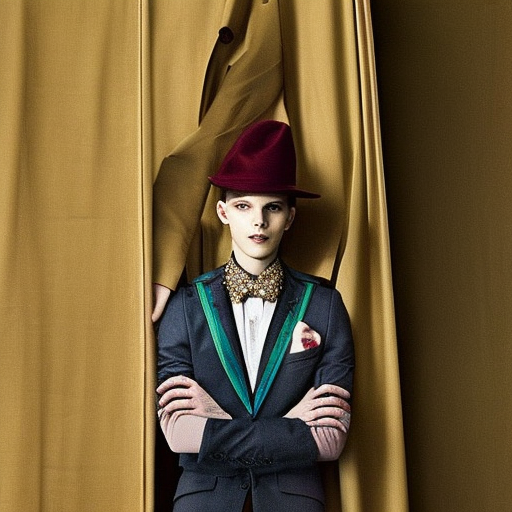Summary: Androgynous fashion is a style that blurs the traditional boundaries between masculine and feminine clothing. It challenges societal norms and embraces a more gender-neutral approach to fashion. This trend has gained popularity in recent years, with many designers and celebrities embracing androgynous styles. Androgynous fashion allows individuals to express themselves freely without conforming to traditional gender stereotypes.
What is Androgynous Fashion?
Androgynous fashion is a style that combines elements of both masculine and feminine clothing. It challenges the traditional binary concept of gender and embraces a more fluid approach to fashion. Androgynous fashion blurs the lines between what is considered “male” and “female” clothing, allowing individuals to express themselves freely without conforming to societal expectations.
A Brief History of Androgynous Fashion
Androgynous fashion has a long history, dating back to ancient civilizations. In ancient Egypt, both men and women wore similar garments, such as kilts and tunics. In the 1920s, the flapper style emerged, which featured loose-fitting dresses and short haircuts, challenging traditional gender norms. In the 1960s and 1970s, the feminist movement influenced fashion, with women adopting more masculine styles, such as pantsuits and tailored jackets.
Key Elements of Androgynous Fashion
Androgynous fashion incorporates several key elements that blur the lines between masculine and feminine clothing. These include:
Androgynous Fashion in Pop Culture
Androgynous fashion has gained significant popularity in recent years, thanks to influential designers and celebrities embracing this style. Designers like Alexander McQueen, Yves Saint Laurent, and Rei Kawakubo have incorporated androgynous elements into their collections, challenging traditional gender norms in the fashion industry.
Celebrities such as Janelle Monáe, Tilda Swinton, and Harry Styles have also become known for their androgynous fashion choices. They have used their platform to promote gender fluidity and challenge societal expectations of how individuals should dress based on their gender.
The Impact of Androgynous Fashion
Androgynous fashion has had a significant impact on the fashion industry and society as a whole. It has opened up conversations about gender identity and expression, allowing individuals to feel more comfortable expressing themselves authentically. Androgynous fashion has also challenged traditional beauty standards and encouraged inclusivity in the fashion industry.
In conclusion, androgynous fashion is a style that blurs the lines between masculine and feminine clothing, challenging traditional gender norms. It incorporates elements such as neutral colors, oversized silhouettes, and mixing masculine and feminine pieces. Androgynous fashion has gained popularity in recent years, with influential designers and celebrities embracing this style. It has had a significant impact on the fashion industry and society, promoting gender fluidity and inclusivity.












